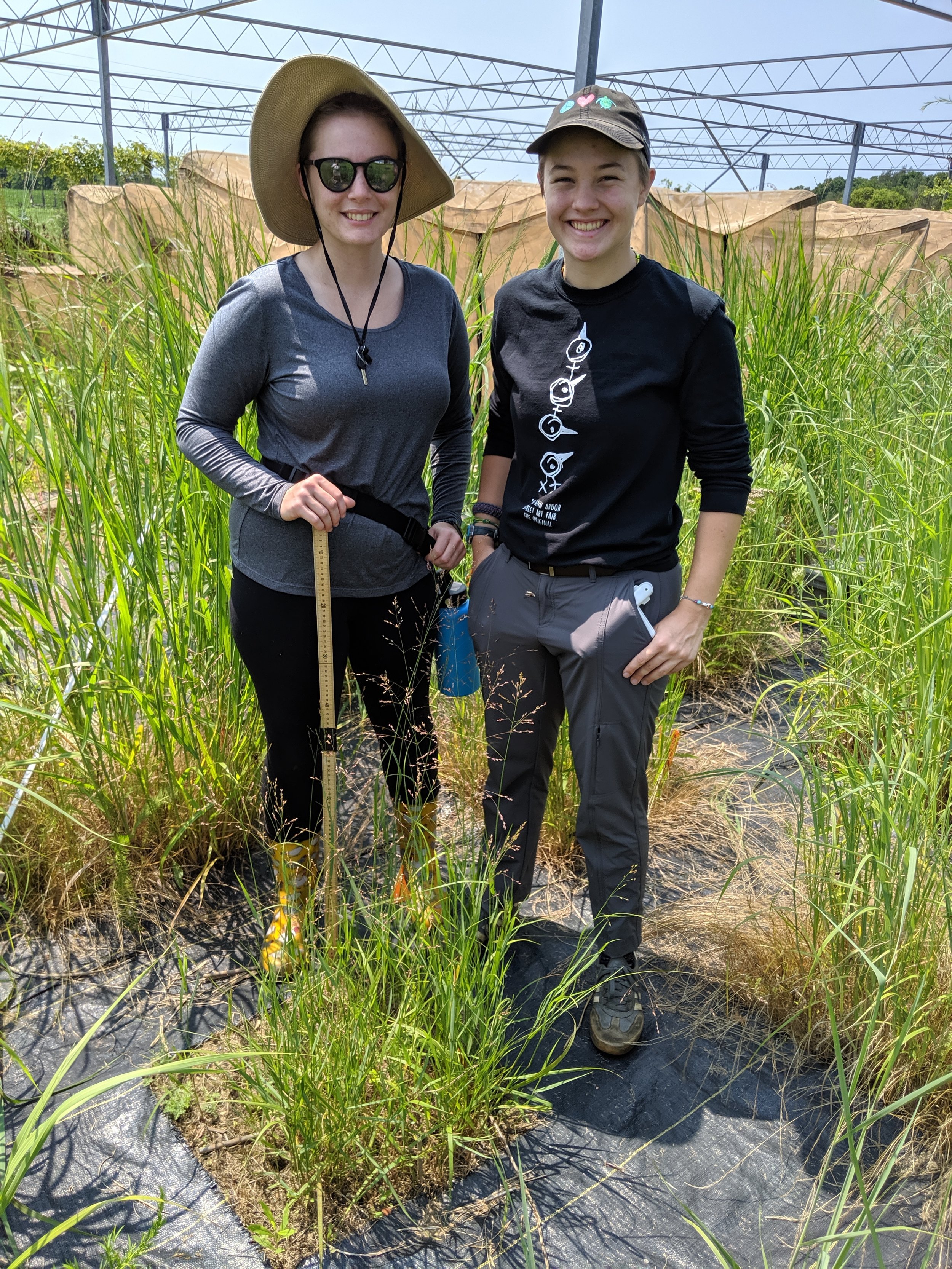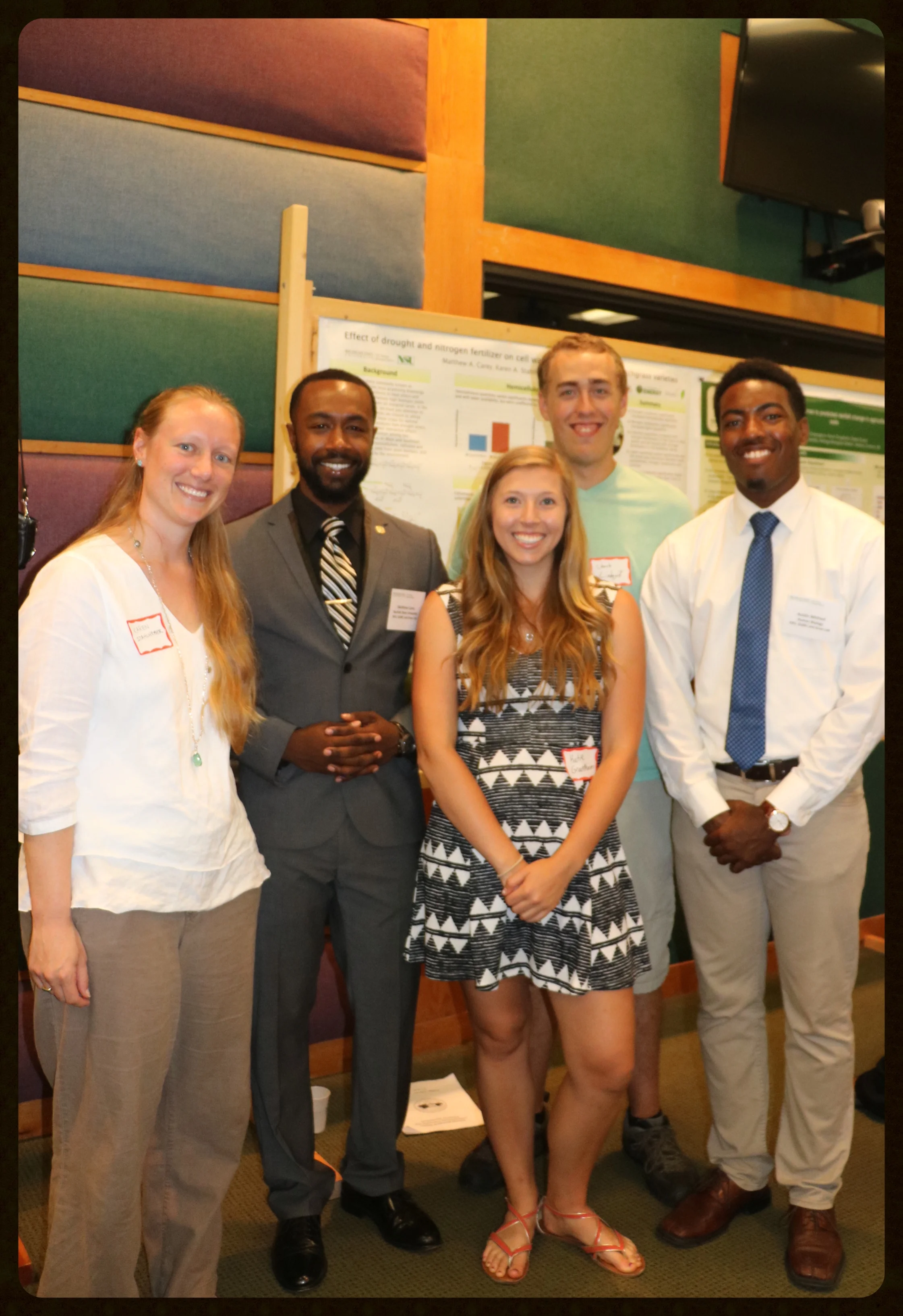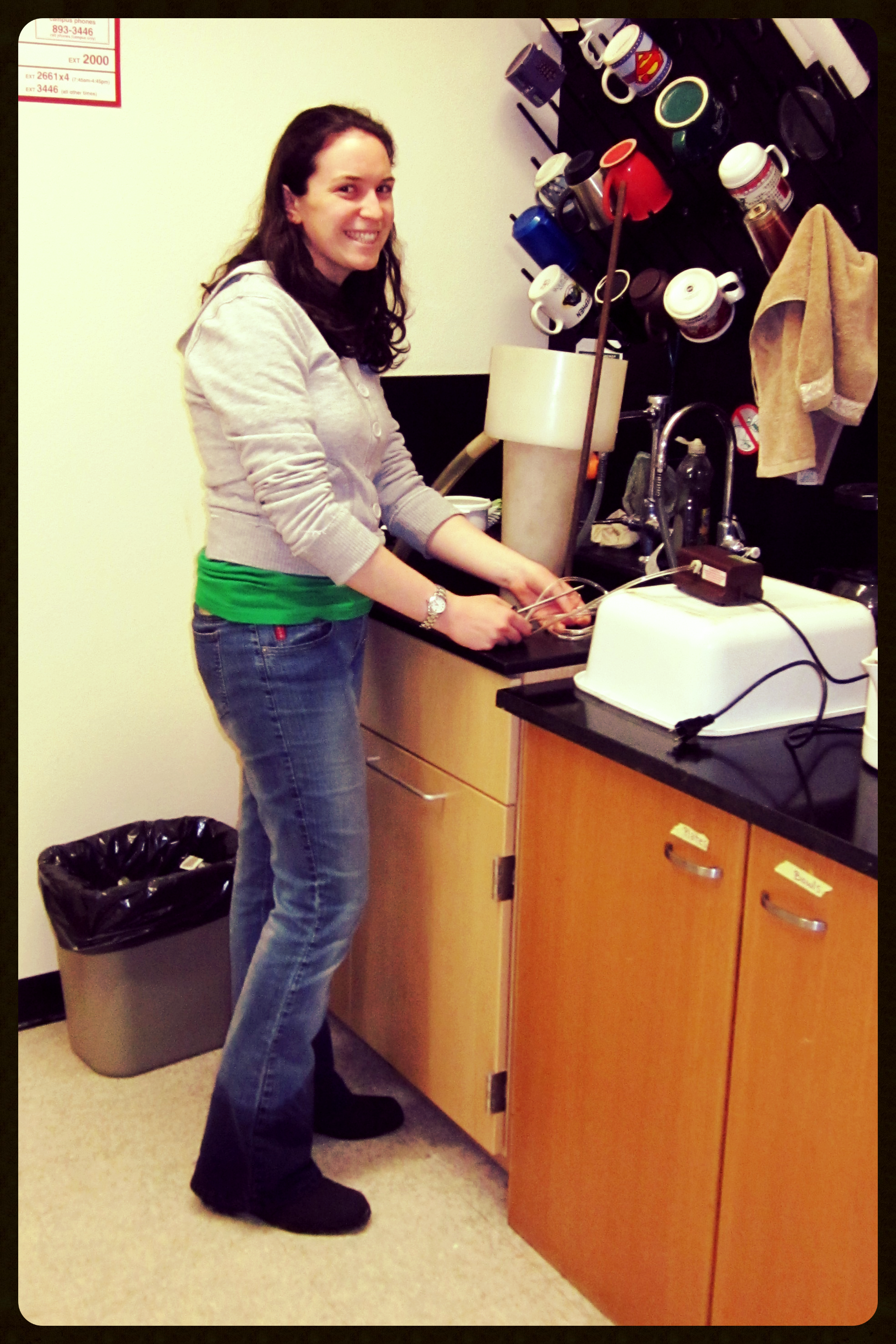I have greatly valued the opportunity to interact with an inspiring and diverse group of high school students, undergraduates and teachers throughout my research career. I feel that emphasizing science as a process in which all can participate is critical for improving scientific understanding in the world outside education. Thus, guiding mentees through their own research projects and encouraging their growth as scientists has been one of the most rewarding aspects of research for me.
As I have benefited from quality mentoring, I strive to provide opportunities for aspiring scientists to explore their own interest in biology. I emphasize self-efficacy in mentees by providing a supportive yet challenging research environment, establishing expectations, and acknowledging successes as they become more and more independent. The unique perspectives, life experiences and ideas brought by all of these mentees while we worked together have greatly enriched our projects.
CURRENT RESEARCH MENTEES
Brandon Byrne (University of Wisconsin Green Bay)
Brandon began a project funded by the Natural and Applied Sciences Heirloom Plant fund to investigate the connection between plant species diversity and carbon storage in coastal, freshwater wetlands at Point au Sable. He will be taking plant and soil samples this summer and analyzing carbon and nitrogen content throughout the fall semester.
Kyle Hansen, Abby Mader, Eric Mattos and Hunter Paplham (University of Wisconsin Green Bay)
These students are all working on surveying the plant community of 20 year old oak savanna on the UWGB campus. We are also measuring growth and physiology of the oak trees (one remnant tree and all the planted saplings) to help guide future restoration efforts and evaluate the success of the trees in the last two decades. They also helped with understory surveys for a forested plot owned by the Sisters of St. Francis of the Holy Cross and are learning about plant identification and herbarium sample collection and processing.
FORMER RESEARCH MENTEES
Meghan Jeffus (California State Polytechnic University Pomona) and Maggie Haite (Michigan State University) Summer 2019
Meghan and Maggie worked on the switchgrass complementarity project at Kellogg Biological Station, continuing the growth, productivity and leaf traits measurements. They also maintained a new experimental treatment where we removed all weeds (non-switchgrass) from half of the plots and measured light levels. To investigate any potential plant-soil feedback affecting weed establishment, Meghan and Maggie also completed a greenhouse experiment growing several common weeds in pots inoculated with soil from our experiment.
Yuntlekalau McLester (University of Wisconsin Green Bay) Spring 2019
Yuntlekalau completed an independent study project on maple syrup production in NE Wisconsin, focusing on a sugar bush she participated in with the Oneida community and her family. She compared sugar content of the sap from sugar and silver maples early and late in the tapping period, and searched the Oneida archives for historical information on syrup production and practices. She prepared a final paper synthesizing her literature review, historical work and the sugar analysis.
Olivia Poelmann (University of Wisconsin Green Bay) Fall 2018 - Spring 2019
Olivia developed a greenhouse project comparing native and non-native plants’ salt tolerance and uptake capability when exposed to high levels of runoff from salt-treated roads. She also compared soil conductivity of various locations along campus roadways beginning at thaw through early spring. Her project was supported by a Natural and Applied Sciences Heirloom Plant Fund grant, and she presented her preliminary findings at the UW System research symposium.
Torél Beard (Michigan State University) Summer 2017
Torél continued the work of Bibiana Rodriguez and others on the switchgrass complementarity experiment at Kellogg Biological Station. He measured growth, leaf nitrogen content and the weediness of monocultures and mixtures of different switchgrass cultivars. As a student in a summer plant taxonomy course, Torél was very interested in the diversity of the weeds growing with the switchgrass plants, and conducted a survey to look at any differences among treatments. He presented a poster at the 2018 Ecological Society of America Meeting.
Kenzie Ostien (University of Wisconsin Green Bay) Spring 2017 - 2018
Kenzie worked for several semesters on a greenhouse project comparing switchgrass inoculated with different microbial communities. We tested mycorrhizal colonization, growth and phosphorus uptake differences among switchgrass plants grown in sterile soils, soils inoculated with non-fungal microbes and the full microbial community from field sites where switchgrass was planted as part of a biofuel project in partnership with the Oneida Nation.
Jeremiah Shrovnal (University of Wisconsin Green Bay) Fall 2016- Spring 2017
Jeremiah initiated a project on the capacity of different plant species to take up phosphorus in rain garden “mesocosms”, with support from the Natural and Applied Sciences Heirloom Plant Fund. He compared native and non-native plants as well as monocultures and mixtures in terms of their total P content after applying composted cow manure to simulate agricultural runoff. He presented his findings at the 2017 International Association of Great Lakes Research Conference.
Bibiana Rodriguez (California State University Sacramento) Summer 2016
Bibiana spent the summer at KBS through the NSF-funded REU program. She developed a project investigating the importance of niche complementarity for aboveground and belowground switchgrass production. We planted several cultivars of switchgrass either in monocultures or polycultures, and varied the soil texture and fertility from conditions typical of marginal to fertile sites. She presented her work at the 2017 Ecological Society of America Meeting in Portland, OR through the SEEDS program.
Peter Drogosh (Michigan State University) Summer 2016
Peter participated in the Undergraduate Research Apprenticeship program through MSU, and is a Biosystems Engineering student. He helped collected trait data on specific leaf area for multiple switchgrass varieties grown in a common garden, and helped with many other lab and field projects.
Matthew Carey (Norfolk State University) Summer 2015 & 2016
Matthew was part of the Kellogg Biological Station's REU program. He worked on a project documenting effects of drought and fertilizer application on the cell wall composition (hemicellulose, cellulose and lignin) of switchgrass cultivars. He continued this research at KBS in the summer of 2016, developing his results into a poster he presented at the Ecological Society of America (ESA) Annual Meeting in Fort Lauderdale after earning a SEEDS (Strategies for Ecology Education, Diversity and Sustainability) Travel Award.
Fernando Vizcarra (Alabama A&M University) Summer 2015
I served as a co-mentor for Fernando's REU project at the Kellogg Biological Station, which examined the response of spatial heterogeneity in pasture grasslands to grazing.
Jacob Lindquist (Kalamazoo College) Summer 2015
Jacob worked on his Senior Individualized Project in the Gross lab, focusing on trait variation within and among switchgrass varieties. We compared inter- and intra-specific variability in many ecophysiological traits of grasses considered for biofuel production.
Ashley Carroll (Gull Lake Elementary) Summer 2015
Ashley joined the Gross lab research group as part of a Research Experience for Teachers funded by the Great Lakes Bioenergy Center. We examined soil communities and arbuscular mycorrhizae in biofuel crops, particularly switchgrass. Ashley also developed a new classroom module based on our research project to teach her students about soil organisms and plant growth.
Austin Whitted (Michigan State University) Summer 2015
Austin was part of Michigan State's Undergraduate Research Apprenticeship (URA) program, designed to give undergraduates an early taste of research along with enrollment in summer courses. He helped with many different lab research projects. He also completed independent work measuring the cell wall components of six switchgrass cultivars.
Katherine Grantham (Michigan State University) Summer 2014
Katie was also a URA student, and she worked on a project comparing plant growth with mycorrhizae inoculum from different biofuel fields. She presented that work at an undergraduate research symposium at MSU, as well as at a national meeting for all scientists working with the Great Lakes Bioenergy Research Center in May of 2015. In the summer of 2015, Katie continued helping out with research projects and mentoring this years' URA cohort.
Cassidy Anton (University of California Santa Barbara) Summer 2011
Cassidy conducted a summer project through the College of Creative Studies Summer Undergraduate Research Fellowship (SURF) program. His work expanded my survey of plant composition associated with dead trees to encompass two additional sites and also assessed how the removal of aboveground wood changed the trajectory of the plant community following tree death.
Kimberly Crispin (University of California Santa Barbara) Summer 2012
Kimberly developed an independent project examining arbuscular mycorrhizal fungi (AMF) colonization of three year old native grasses that were planted either in the oak understory or open grassland. She also worked with me to develop a protocol for identifying dead oak trees using wood anatomy, and completed all of the microscope work related to that project.
Both Kimberly and Cassidy were co-authors on with me on a paper recently accepted into Ecology that combined data from both of their work in the lab.
Undergraduates at UCSB also helped with research projects for research credits in their home departments. They helped in the field when possible, weighed biomass, sorted litter decomposition samples, measured root:shoot ratios on greenhouse plants, set up root elutriation samples and performed countless soil analyses.
Students: Maureen Isaacs, Fabiana Licata, Catherine Murillo, Michele Webb, and Alex Zucker
Orlando Torres (Bakersfield, CA) Summer 2010
Orlando was a high school student who joined the D'Antonio lab through UCSB's Summer Pre-College Research Mentorship Program, run through Summer Sessions. His independent project compared soils underneath valley oak trees and in open grassland at four sites throughout California. He learned a variety of soil analytical techniques, and helped with a litter decomposition study in the field. At the end of the summer he participated in a final poster symposium. He went on to enroll at UCSB following graduation.
Gordon Ackerman (Santa Barbara, CA) Summer 2008
Gordon was also a high school student who spent a summer doing research through UCSB's Apprentice Researchers Summer Program (run by the California NanoSystems Institute). This program pairs students interested in science with mentors at the university. Gordon completed an independent project also looking at soils under oak trees, comparing deciduous and evergreen oaks at a single site. He gave an oral presentation at the completion of the program. He attended UC San Diego after graduation.












